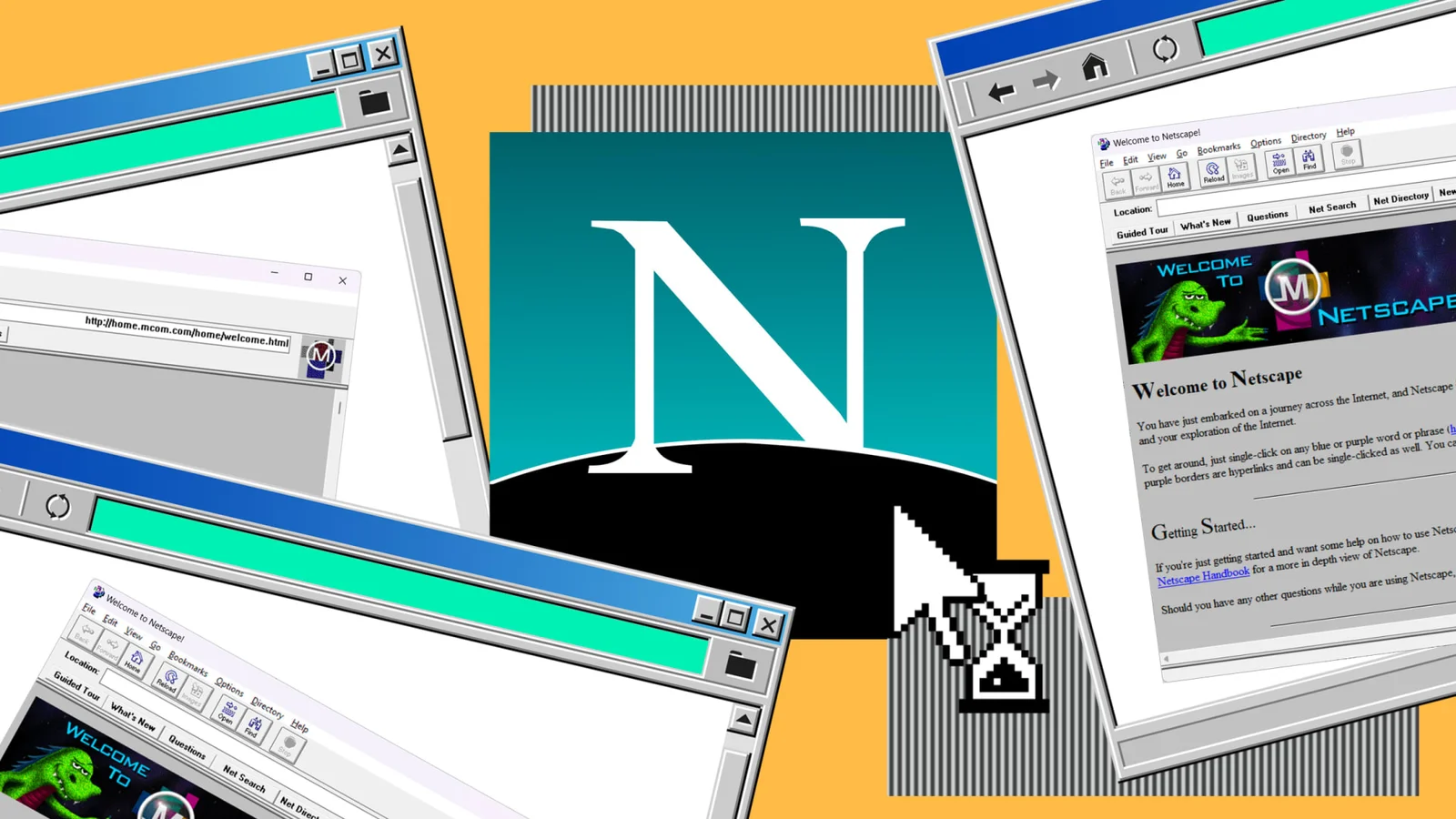How could you at any point manage a 30-year-old rendition of Netscape Pilot on a cutting-edge PC?
From a reasonable outlook, not much. Classic internet browsers, on the off chance that you might make them run in any case, are contradictory with most sites today. In any event, when a site loads, it presumably won’t look right, with odd organizing, lost pictures, and a confused wreck of unrecognizable text around the genuine page content.
Yet, given 2024 imprints the 30-year commemoration of Netscape’s send-off — a delivery that started the principal time of program wars — is not set in stone to utilize the program to visit however many destinations as would be prudent. That try turned out to be an extraordinary opportunity for growth, and a demonstration of how much the web (and the internet browser) has changed throughout recent many years.
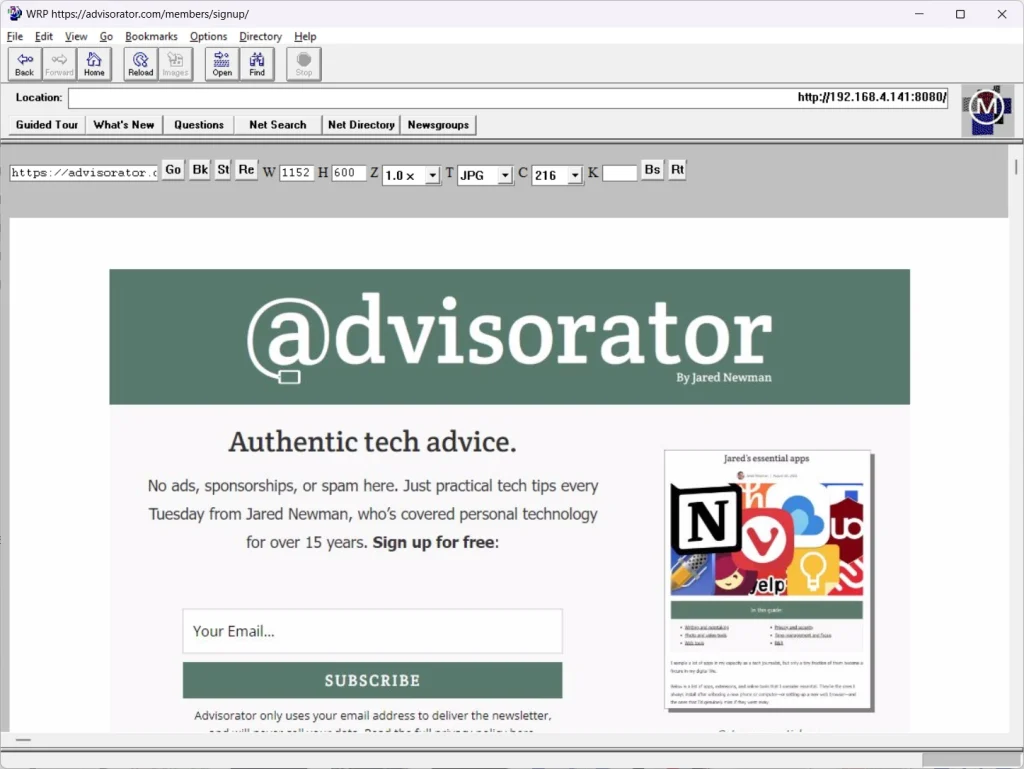
Introducing NETSCAPE Guide 0.92
Netscape was the main business endeavor at an internet browser, and a prompt replacement to Mosaic, which Marc Andreessen and Eric Bina created in the ’90s as software engineers at the College of Illinois at Urbana-Champaign’s Public Community for Supercomputing Applications. Netscape was a massively persuasive program, driving how new highlights were added as a door to the more extensive web for people who recently utilized gateways, for example, America On the Web and CompuServe. By 1996, the organization professed to have 38 million clients.
Netscape’s out-of-control fame constrained Microsoft to assemble Web Adventurer and group it with Windows, in the long run provoking the Division of Equity’s antitrust claim against Microsoft in 1998. Netscape just couldn’t stay aware of Microsoft on program improvement, and a progression of choices planned to contend — delivering another open-source codebase, sending off a set-up of extra items like an email client and web supervisor — simply prompted further stagnation. Netscape was at that point on a way to immateriality when AOL obtained the organization for $4.2 billion soon thereafter, however, it kept on transporting new variants until 2008. (Its open-source code, in the interim, framed the reason for Mozilla Firefox.)
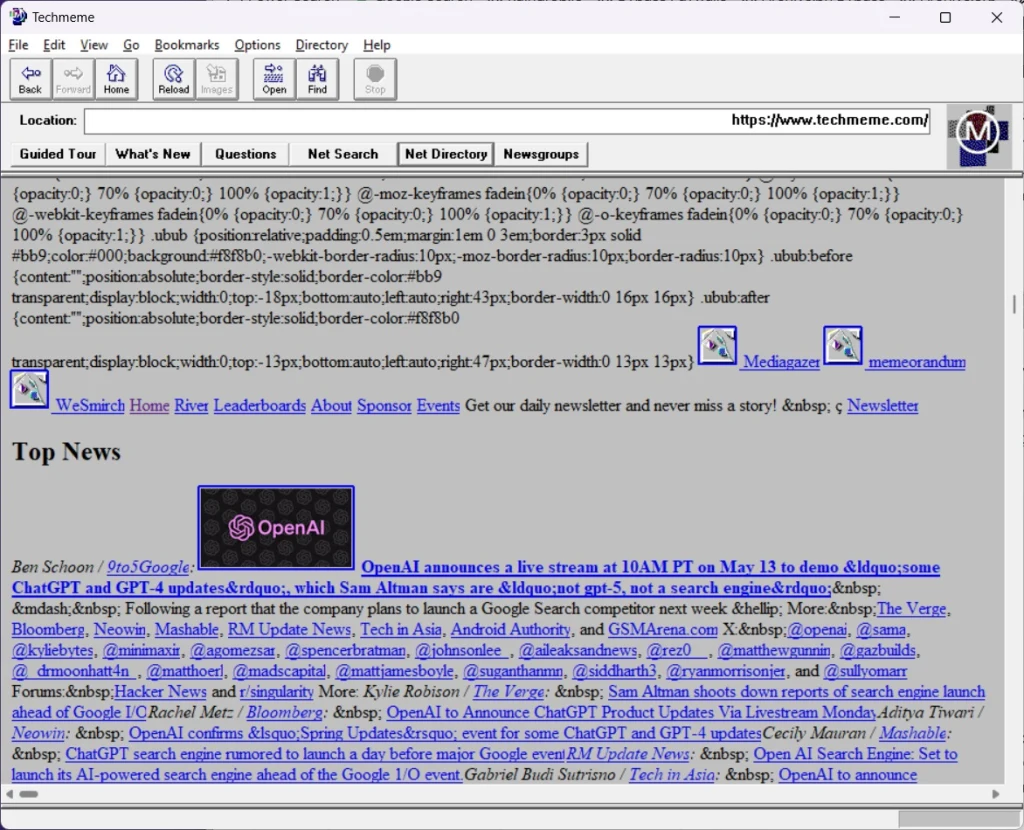
Because of programming developer Jamie Zawinski, you can without much of a stretch download old variants of Netscape and its ancestor, Mosaic. Zawinski, who was one of Netscape’s most memorable representatives, has an individual file of Netscape discharges, the vast majority of which he’s been saving such an extremely long time, and he composed a blog entry in 2008 on the best way to run them.
The most clear choice is Netscape 0.9.2, which is accessible as an instant Win32 executable document. Open the record, and you’ll peruse like it’s 1994, finished with the first “Welcome to Netscape” landing site.
In an email, Zawinski lets me know that the old site conceals a Hidden little goody: Everything loads at 56 Kbps. In an old program, for example, Netscape, that permits the site’s . GIF picture documents to stack line-by-line, very much like the past times.
Recollecting THE OLD WEB
Running Netscape 0.9.2 is likewise a sign of what it was preferred to find the Internet a long time back before Google and Facebook turned into its greatest watchmen.
Dissimilar to the present programs, Netscape has no inherent inquiry capability, and composing into the location bar just works for explicit URLs. To assist novices with figuring out the web, Netscape organized its educational pages, with route buttons incorporated into the actual program. Click around, and you’ll find a clarification of what the web is, a month-to-month log of new sites added to the web, indexes for perusing the web by subject, and connections to some simple web search tools like Lycos.
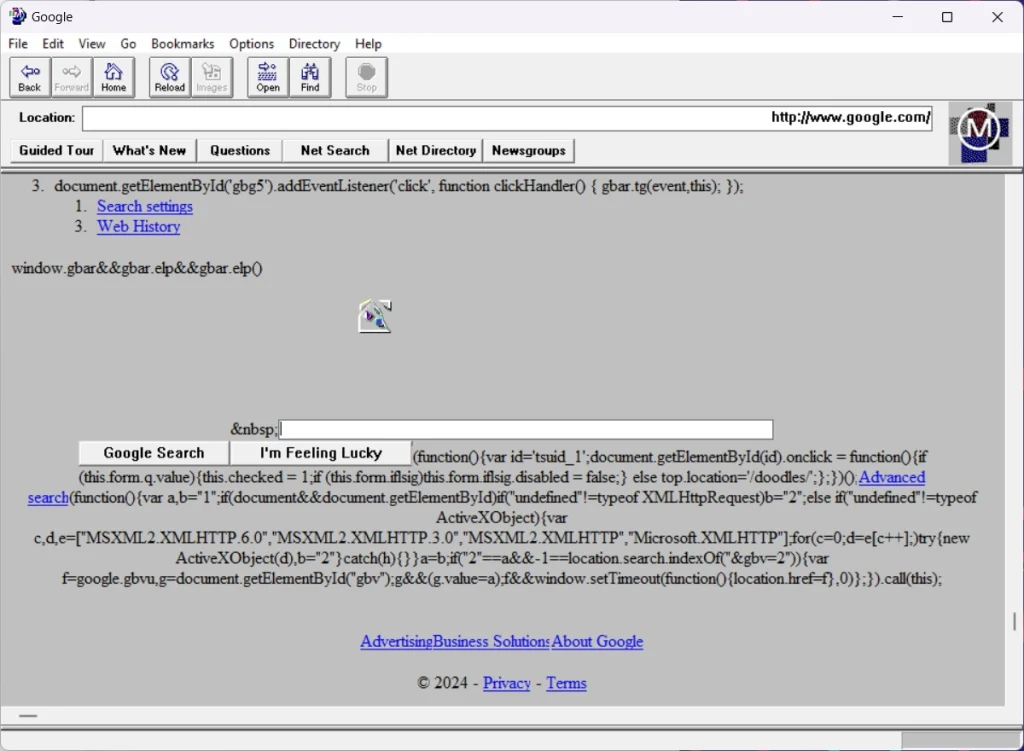
A considerable lot of the program highlights we currently underestimate are absent too. Program tabs didn’t show up until the last part of the 1990s, and certain console alternate routes have surprising ways of behaving (Ctrl+A saves bookmarks as opposed to going about as a choice to choose all). Shutting the program even dumps your whole history, as though you were perusing in Undercover Mode the whole time.
In any case, the one contrast that struck me more than anything else was Netscape’s “Open” button, which shows a spring-up discourse box for stacking a particular URL. In current programs, the location bar is our essential mark of the route, and Google is many times the mediator in any event when we know where we’re going. (The two most well-known Google looked through last year were “YouTube” and “Facebook” as indicated by Semrush.) The “Open” button is a remnant from the pre-search period, and current programs have disposed of it.
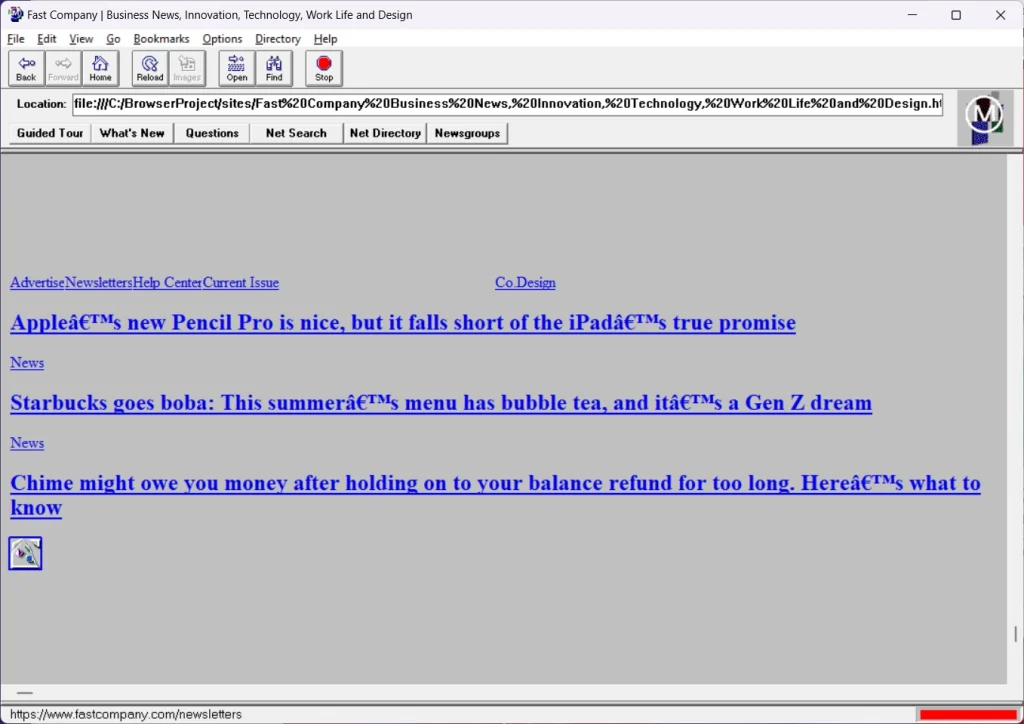
OLD Program MEETS Current WEB
While the old home.mcom.com site works in old adaptations of Netscape now, that wasn’t generally the situation.
For quite a long time, the URL diverted to netscape.com, and that site thus diverted to one of AOL’s presentation pages. Zawinski worked with a contact at AOL to reestablish the old site at its unique URL, and it’s presently facilitated by Hurray, which converged with AOL under Verizon in 2017 (and is currently possessed by a confidential value firm).
Making the site viable with the most seasoned Netscape forms required extra work. Before 1997, internet browsers utilized the HTTP/1.0 convention, which didn’t uphold the “Host” header that web servers presently use to have numerous spaces under one IP address. HTTP/1.0 likewise didn’t uphold the headers that let a program and site arrange a site’s personality set, bringing about a blunder message.
As a workaround, the mcom.com site is presently facilitated under its IP address, and Zawinski says he worked with AOL and Hurray to point their DNS names to his server. He then, at that point, arranged for his server not to send any headers that one-of-a-kind Netscape forms wouldn’t perceive. All of this intends that assuming you introduce Netscape 0.92 today, it ought to at least have the option to stack the program’s unique invite page and educational pages.
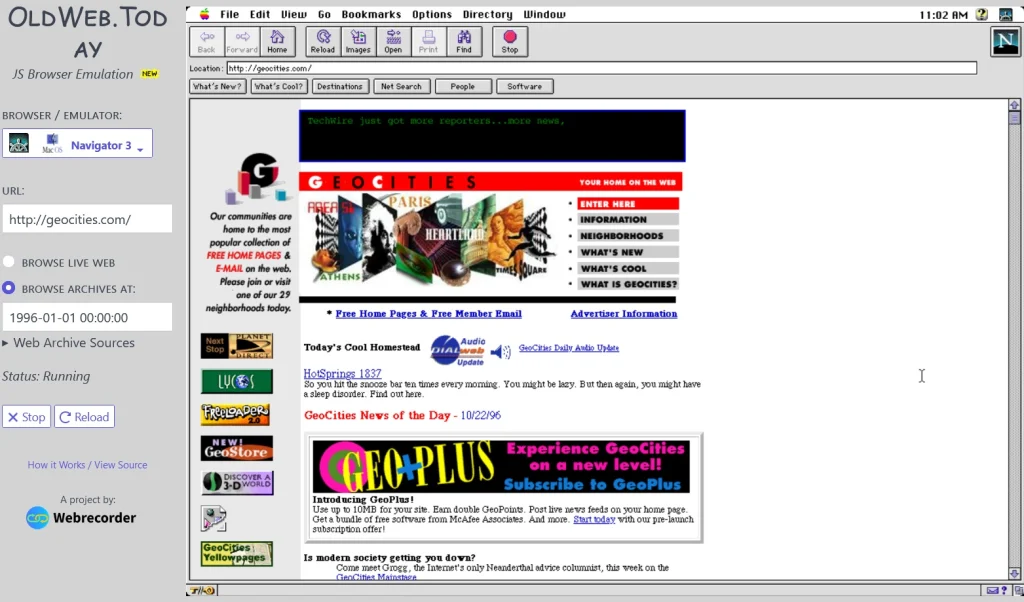
Tragically, most current sites aren’t all that obliging. Google, for example, hurls a “No Watcher Designed” blunder, due to the previously mentioned absence of header support. All the more significantly, most sites presently use TLS encryption as a safety effort and never again support decoded HTTP forms. Netscape didn’t begin supporting encoded pages until 1995, and TLS didn’t show up until four years after the fact, and that implies Netscape 0.92 is contrary to almost any site you’d need to visit.
THE Mission FOR Additional Sites
Unflinching, I figured there should be a method for making Netscape work with current sites. Furthermore, that is the point at which I went down some significant dark holes.
The crudest choice is to just download individual website pages in an alternate program, and then load the nearby HTML record in Netscape. This is the main way I had the option to see Quick Organization’s landing page, yet it wasn’t great.
Another methodology comes from Zawinski himself. In his 2008 blog entry on running old programs, he connected to a Perl script for an intermediary server that deciphers between the old HTTP/1.0 convention and the cutting-edge web’s HTTP/1.1 conventions, permitting Netscape 0.92 to appropriately stack headers and character sets. I have never utilized Perl, however, I discovered a few guidelines, set up the intermediary on my Macintosh Smaller than expected, then designed Netscape to course all traffic through it.
That worked for a small bunch of locales. I currently approached Google’s HTTP rendition, for example, alongside Weave Give’s 1996 mission site, CNN’s O.J. Simpson preliminary news center point, and a site too obscene to even consider referencing by name, in addition to other things.
But, by far most of the advanced web stayed inaccessible in my rare program because of its absence of HTTPS support. Assuming that I attempted to stack my site, for example, I’d get a mistake saying the record had moved.
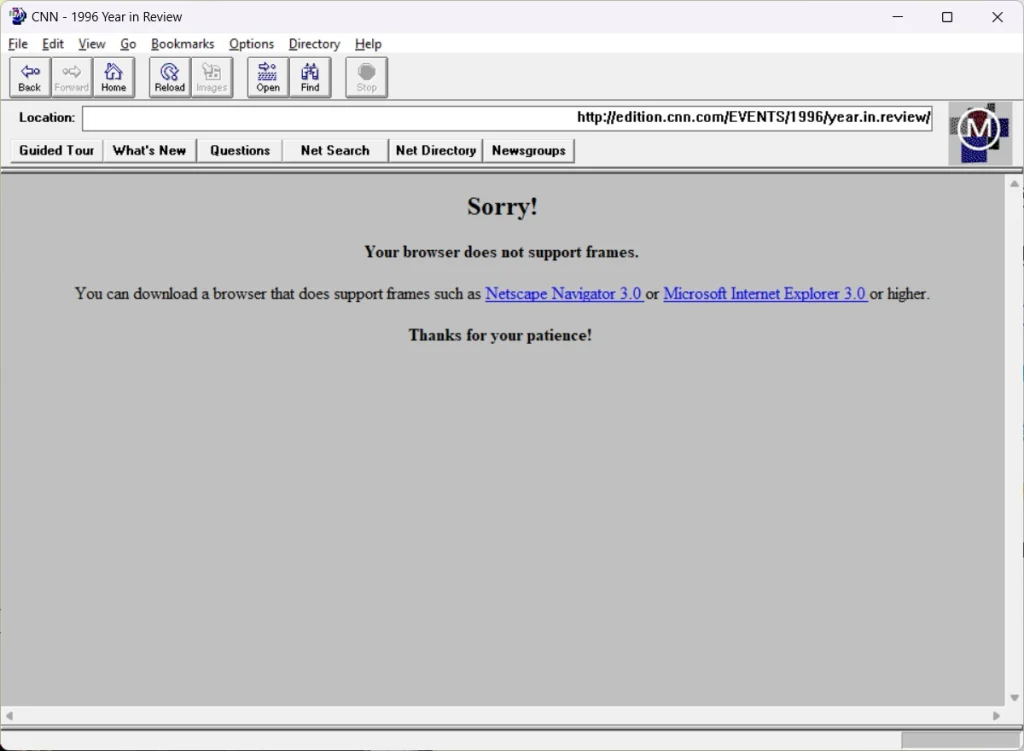
That drove me to a post on StackExchange that recommended setting up a forward HTTP-to-HTTPS intermediary in nginx, one more device with which I had no insight. After bobbling my direction through additional web-based instructional exercises, I reconfigured Netscape’s intermediary settings, and presto, I had the option to stack my site, the Techmeme landing page, and that’s just the beginning.
However, they didn’t look especially great. Without help from JavaScript (which Netscape spearheaded in 1995) and CSS (which Web Voyager was quick to help in 1996), the pages that worked would show an entire pack of superfluous code at the top and base.
In the meantime, numerous different sites actually wouldn’t stack by any stretch of the imagination because of an absence of header support. My most realistic estimation is that the subsequent intermediary didn’t take care of the issues tended to by the primary intermediary, or the other way around, and I was unable to sort out a method for associating the two together. That is about when I abandoned the entire undertaking.
THE More Straightforward WAY
Late night of trial and error, I understood that the web has recently overcome much to function admirably in an old program — both for better and in negative ways. While the earliest sites depended on only a limited quantity of HTML code, current sites are more similar to all-out applications, with their intuitiveness, refined designs, and elaborate approaches to following everything you might do. You can fix an old program to address some essential similarity issues, yet it actually will not be intended for what the web has become.
In any case, on the off chance that you’re actually wanting a sample of the exemplary web, several different methodologies might yield improved results.
The least complex choice is oldweb. today, it copies an old form of MacOS running different programs. It can stack pages from the live web or the Web File, however I’ve viewed it as problematic.
A more muddled approach is to introduce the Internet Delivering Intermediary, a free program that renders site pages all alone and shows them as pictures inside any Internet browser. When utilized with Netscape 0.92, most destinations ought to look similar to those in Google Chrome today.
Simply know: In the two cases, you’ll skirt past all the difficult advancements that got the web to where it is presently.
Perceive your image’s greatness by applying to the current year’s Brands That Matter Honors according to schedule, June 14.
